Rishad Tobaccowala's Blog, page 15
April 9, 2023
Creative Cultures.

Photography by Michele Sons
In 2010 Kat Gordon was the rare creative director who was a woman.
3 percent of creative directors were women then and almost no one of color.
Kat decided to do something about it, and she began The 3% Movement built on the belief that Diversity=Creativity= Profitability.
Ten years later after a decade of conferences and other initiatives nearly 30 percent of creative directors were women and while there is still a way to go Kat re-imagined and re-invented the movement to be even more community and peer to peer driven.
Kat was the latest guest on What Next? where she discussed how to be “Creative about Creative Leadership”. The conversation is applicable to any company , individual or leader regardless who might be grappling with culture, creativity, combining AI with humans, the future of the workplace and much more.

Photography by Michele Sons
Creative cultures are communities of belonging held up by trampolines of trust and creative entrepreneurship.For decades companies have run as hierarchies.
The boss has been the parent and the employees the children.
It was important to gain favor with “dad” to earn rewards and to avoid punishment.
There was the “Sun-King’ at the center with some others in the royal court and most people were after thoughts on whom no light shined.
Changing demographics, new mindsets, enabling technology and distributed work is moving power from the center to the edge.
Stars can shine anywhere.
Creativity is increasingly about teamwork…note how entire teams take the stage at Cannes.
It is about community and a peer orientation where taking risks and speaking up and making mistakes are supported by trampolines of trust versus encrusted with jagged cliffs of death.
It requires Creative Entrepreneurs who build, create, sculpt and design not just new work but new organization and ways of working.
We not only have to re-think creativity but creatively re-think the creative organization.

Photography by Michele Sons
Creative cultures like nature constantly evolve and adapt and constantly ingest, incorporate, and build on new technologies.The 3% Movement changed the way they work, and their focus based on new technologies, new ways of working and new challenges.
Nature evolves. We are on the 16th operating system of the Apple iPhone. Culture changes.
Creativity by definition is about the new, the fresh, the insightful, the not done before!
Moving hearts and minds, building brands and telling stories have changed as we moved from word to audio to film to digital to multi-media.
Modern technology of prompt to words (GPT-4), prompt to image (DALL·E 2, Mid-Journey, Stable Diffusion) or prompt to video (Runway ML) are already being leveraged by the creative community to great effect in three ways:
a) Enhanced Productivity: The best creative talent is overworked and often burned out. These new technologies save time and become super assistants to them in eliminating much rote work. So many creatives will benefit from tools to help them become more productive.
b) Idea Catalysts: Now instead of staring at blank sheet of paper to start a project we have starter ideas, templates, first drafts and initial imagery to build on, add our unique value to, correct and enhance. New options will unleash new worlds of creativity.
c) New Paints and Canvases: Today Creatives have a canvas of the new immersive worlds of gaming driven by Unreal Engine, 3D frontiers of creativity where the real and virtual blend such as AR/VR as well as Mongrel Media where one can embed and combine commerce and video and much more, All of these are opening massive new universes for creativity which would not have been achievable or scalable without the new AI tools.
While change might be difficult, irrelevance is worse and talent will adapt and incorporate the new tools. Some jobs will go, and others will come but if “life is short and art is long”, creativity and the creative community will not just endure but thrive.

Photography by Michele Sons
Companies that believe in diversity should also allow diverse ways of working.The future of how work will be done in an unbundled and distributed era while operationally challenging is creatively exciting!
Creativity is connecting dots in new ways.
Ideas can occur anywhere whether it is on a walk, in a shower or while grocery shopping.
In person interaction can happen at conferences, restaurants, bars, learning events, training programs as well as the office.
It is time for companies to be brave and not go back to the safety of what was one tried and true.
Different people have different ways they prefer to work.
Different levels of expertise need different environments and support.
Instead of being like the Mandalorian and mandating “this is the way” leaders should follow the wise words of The Lawrence of Arabia’s recognizing that “nothing is written!” and experiment with different ways.
Companies that develop and integrate a portfolio of ways of working in ways that are balanced and unified but with built in flex are likely to attract, unleash and turbo-charge creativity.
They will create cultures of innovation and potentially gain long term competitive edges.
Diversity of working styles is also diversity and now is the time for companies to try different models and then offer some subset of choices to talent.

Photography by Michele Sons
A significant number of future creative leaders will be introverts and empaths.When Susan Cain wrote the best-selling book Quiet: The Power of Introverts in a World That Cannot Stop Talking she noted that half of the population described themselves as introverts.
But today in many industries 80 percent or more of the leaders are extroverts.
This is changing and recent developments will turbo-charge the rise of introverts and empaths so that the leadership population is more like the general population.
There are many reasons for this rise beginning with the rejection of toxic or bullying or command and control cultures. People today have just too many options to put up with nonsense. People leave bosses much more than they leave companies.
More importantly the world of unbundled and distributed work is introvert and empathy friendly since many office environments with their noise and “war-rooms” are not conducive to these personalities who prefer quiet and reflection to get things done.
More importantly in a world of Zoom everyone can be “seen”. The boss has the same square footage on Zoom as the lowest ranked employee There is no corner office equivalent of Zoom where someone’s tile is bigger (probably one reason some bosses want people back to the office).
The loud and the quiet are on equal footing.
People are more likely to speak up. Content quality, conversational ability, creativity inspired, and the community minded can thrive.
And in a world where the left-brain tasks will be increasingly done by machines there will be a great demand for empathy, emotion, and humanity to work in tandem with the machines.
Remember the Memorex ad that asked “Is it live or is it Memorex? and the orange juices that promise they are “100 percent pure squeezed”
Soon just liked hand crafted, artisanal, and traditional earns a premium price, we will be promised “100% human” while we wonder whether “Is it human or is it AI?”
For companies focused on diversity it is important to remember that diversity includes people with different personalities.
In a brave new world lets be creatively open, embrace diversity and be organizationally brave.
April 2, 2023
The New World of Work.

In March of 2023 the headline of a cover story in the Wall Street Journal shrieked “ Work from Home Era ends for millions of Americans”
The very same day another headline in Axios read “ Remote work is starting to hit office rents”
On closer analysis, the Wall Street Journal article explains why their headline while true does not reflect the nuance in the data which indicates that while fewer people are working fully remote, and more employees are coming back to the office for a few days a week, in many white collar and information driven industries three years after the pandemic significant portions of work is no longer done in the office.
Which explains why in major cities such as New York and San Francisco which have many white collar and information technology workers and where commute is expensive office rents are declining by 15% (New York) to 30% (San Francisco)
For instance, the article noted:
“Remote work remained common last year in some jobs that traditionally were done in an office. In the information sector, which includes tech and media firms, 67.4% of establishments said their staff worked remotely some or all the time. In the professional and business sector, which includes law and accounting firms, the share was 49%.”
And the share of establishments that were fully remote rose slightly last year, to 11.1% of establishments from 10.3% in 2021, the Labor Department said. In the information industry, that share increased 4.8 percentage points, to 42.2%.
In February 2023, 27.7% of total days worked were from home, after holding steady at an average of 30% each month in 2022, according to research by economists Jose Maria Barrero of Instituto Tecnológico Autónomo de México, Stanford’s Nicholas Bloom, and Steven J. Davis of the University of Chicago. The share is down sharply from May 2020, when around 60% of days were remote but still more than five times the rate that prevailed before the pandemic.
And the article notes when it comes to fully remote work it “isn’t likely to entirely disappear.
Some 13% of current job postings are for fully remote positions, according to staffing firm ManpowerGroup. That is down from 17% in March 2022 but well above the pre-pandemic level of 4%.”
As Covid recedes of course retail and other workers will go back to work and so will many white collar and info tech workers for some of the time.
There is a great benefit to in person interaction for some of the time.
But world has changed in so many ways that there is no going back to 2019.
Here are just 6 of many changes:
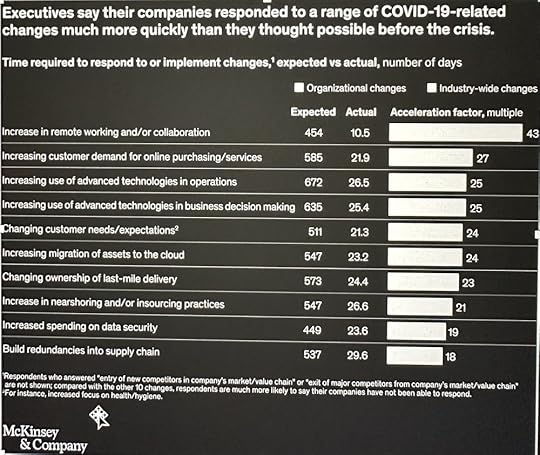 1. Significant investments in digitizing workplace means companies are now structured to service customers and support employees in different ways.
1. Significant investments in digitizing workplace means companies are now structured to service customers and support employees in different ways.A Mckinsey study showed that within six months of offices closing companies had accelerated their digitization by several years. As a result, companies have been built to have their employees work from anywhere and support their customers in any way.
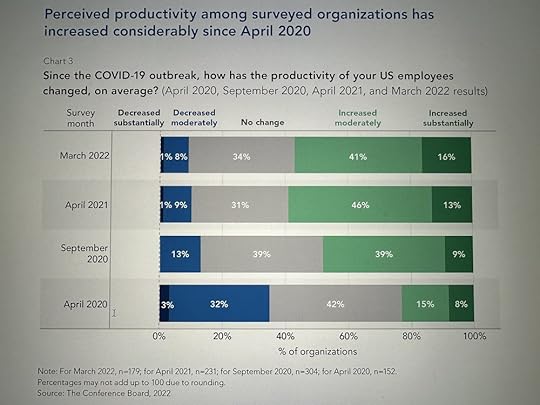 2. Improved productivity because of hybrid work.
2. Improved productivity because of hybrid work.The half of the workforce that have jobs which have allowed for remote work have reported that they are more productive in a hybrid versus a full time in the office environment. This is reflected in a three year tracking study from the Conference Board that indicates that as companies and individuals get their mind around the reality that the future of work for many industries is hybrid and they create processes and structure around this people are becoming more productive.
In addition recent study at the University of Birmingham, which surveyed 597 managers, has shed light on how managers’ attitudes towards the hybrid work model have changed as a result of the pandemic. Surprisingly, the findings reveal an increasingly positive outlook on the benefits of remote and flexible working.
The study found that 52% of managers agreed that working from home improves concentration, 60% said it improves productivity, and 63% stated it increases motivation. This is a significant shift in attitude, as there has long been a perception that working from home can be a distraction, leading to a lack of productivity and motivation.
The study also revealed that more than seven in 10 (73%) managers felt that giving employees flexibility over their working hours increased productivity, while 60% said the same for working from home. This suggests that managers are starting to recognize that giving employees more control over when and where they work can lead to better performance.
The emerging reality is that in-person interaction is critical for many aspects of culture, people growth and quality control.
The debate is not between not coming into the office or coming into the office most of the week. Rather is is how to combine the benefits of in-person with those of distributed work.
And to ensure that in office is really about in person versus a form of control, absence of trust, input monitoring and the inability of a management class to learn to be leaders versus bosses.
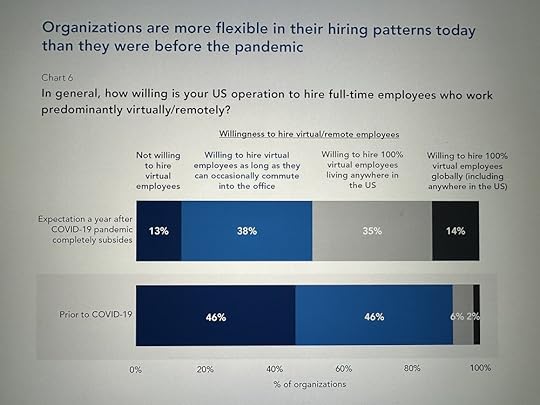 3. Companies have become much more flexible about hiring workers from anywhere according to the Conference Board which benefit both employee and company.
3. Companies have become much more flexible about hiring workers from anywhere according to the Conference Board which benefit both employee and company.Before the pandemic, 46 percent of surveyed HC leaders indicated that their organizations were not willing to hire virtual employees, and 8 percent were willing in the US or globally. Now 49 percent are willing to hire 100 percent virtually, a sixfold increase.
The flexibility enables not only makes it easier to attract talent but also gain more diverse talent and reduce costs by recruiting from a much larger pool and cutting certain costs such as real estate.
 4. People have a new mindset which no longer put up with toxic cultures or burn out.
4. People have a new mindset which no longer put up with toxic cultures or burn out.The Great Resignation according to MIT Sloan is driven by people were leaving not for higher pay somewhere else but fleeing from a toxic culture and poor management
A toxic corporate culture is by far the strongest predictor of industry-adjusted attrition and is 10 times more important than compensation in predicting turnover.
MIT’s analysis found that the leading elements contributing to toxic cultures include failure to promote diversity, equity, and inclusion; workers feeling disrespected; and unethical behavior.
The MIT analysis enforces a recent Harvard Business Review article, where 76% of the workers polled believe that employees will be more likely to prioritize lifestyle (family and personal interests) over proximity to work and will pursue jobs in locations where they can focus on both—even if it means taking a pay cut.
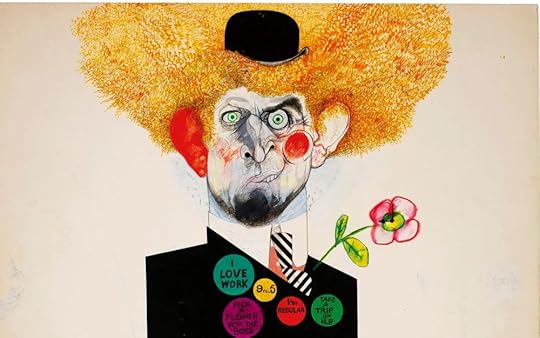 5. New Approaches to Management and New Management Skills focused more on leading and looking after people versus managing and processing work.
5. New Approaches to Management and New Management Skills focused more on leading and looking after people versus managing and processing work.There are significant challenges to managing in todays unbundled and distributed workplace.
I asked GPT-4 if management was necessary in a world of unbundled work and here is what it said:
“Covid-19 has not necessarily reduced the need for management, but it has changed the way management functions in various organizations. The pandemic has forced organizations to adapt quickly to new ways of working, such as remote work and virtual collaboration. This has led to shifts in management practices and priorities, including:
1. Emphasis on digital transformation : With remote work becoming the norm, organizations have had to invest in digital tools and platforms. Managers need to stay updated on the latest technologies and implement them to streamline work processes and communication.
2. Communication and engagement : Managers have had to adapt their communication styles to ensure clear and effective communication within remote teams. This has led to an increased emphasis on video calls, regular check-ins, and virtual team building activities.
3. Focus on employee well-being : The pandemic has highlighted the importance of mental and emotional well-being. Managers have been tasked with providing support and resources to help employees cope with stress, anxiety, and other challenges that come with remote work.
4. Adaptability and flexibility : Managers have had to be more agile and adaptable in navigating through the uncertainties brought about by the pandemic. This has included adapting work policies, redefining goals, and rethinking strategies to align with the changing business landscape.
5. Reskilling and upskilling : With the pandemic accelerating digital transformation, managers have had to ensure their teams are equipped with the necessary skills to adapt and remain competitive.
While the pandemic has not reduced the need for management, it has shifted priorities and required managers to develop new skills and approaches to effectively lead their teams in a rapidly changing environment.”
If managers need to manage better they will always have a co-manager in AI!
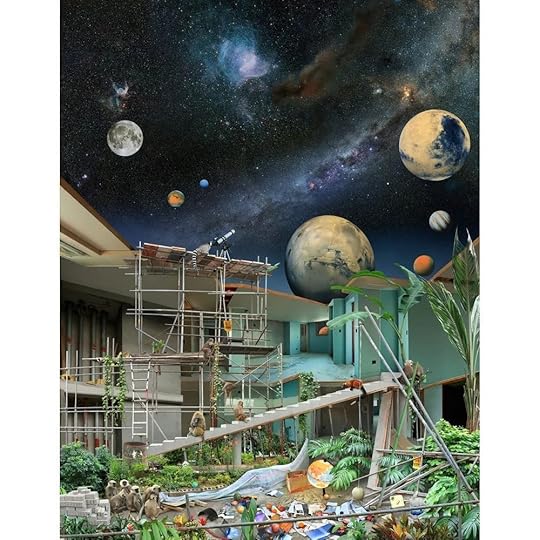 6. The Future for most white-collar companies will be a blend of in-person and unbundled distributed work combining high-tech and high-touch.
6. The Future for most white-collar companies will be a blend of in-person and unbundled distributed work combining high-tech and high-touch.When people believe that things are going back to the way they were pre-pandemic in addition to the facts that indicate otherwise one must remember that people’s minds are like champagne corks. They swell and they do not fit back into the bottle.
Three years of working differently combined with widespread availability of technology to work remotely across every company and industry means the future will not fit in the containers or the mindsets of the past.
Here are three reasons that even businesses who want to have employees spend 3 days or more in the office because they believe training, culture and quality require it they will not force things back to the way they were:
1. Larger pools of talent: Allowing for some or primary unbundled and distributed work allows companies to recruit from a far larger pool of talent. This is not just because they can hire from any market but also, they can recruit mothers looking after children, people not able to commute and people who want to work part time. In addition they can access their entire global workforce moving demand to where there have staff versus having to hire staff in one market while cutting staff in another. No company can compete by reducing its flexibility to access the best available talent pool.
2. Reduced costs: Remote work enables cost reduction not just because one can hire form a larger talent pool but there will be less travel costs, less real-estate costs and less severance if work can be moved between markets. In addition there will be fewer overhead costs because now more of the work force can be fractionalized, contracted or hired part time.
3. Future Ready: We have entered the Third Connected Age of Technology where AI, AR/VR, 5G and Blockchain all will turbo charge distributed work and change the profile of organizational design.
The future companies will re-aggregate talent recognizing the future of work will be around gigs which require different expertise coming together at different times. This talent will work alongside tech enabled machines and will need to continuously grow and hone its skills,
It is unlikely returning to 2019 way of working will suffice for this new world.
March 26, 2023
Architect. Sculpt. Hone.
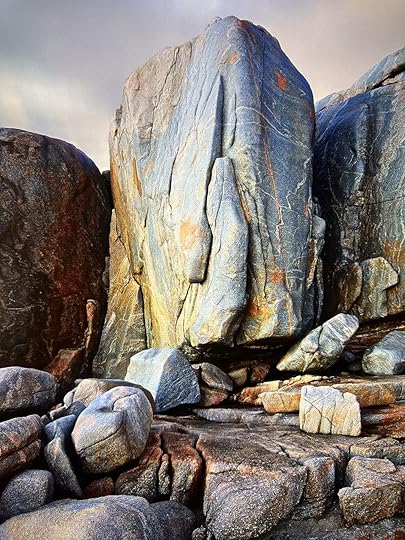
Photography by Christian Fletcher
These days waves of change, seas of surprises and tectonic tsunamis are transforming our landscapes on an almost weekly basis.
Rapidly accelerating AI.
Bank failures.
Tech and other layoffs.
China Cards. Russian Wars. Indian Nationalism.
And the list goes on.
Doom scrolling. Hyper ventilating. Dramatic emotions. Screeching headlines.
All of these are understandable human reactions as we grope to find a place to stand in rapidly shifting sands.
But nothing gets better at the end of the venting of feelings though we may feel better as we rail against a world out of control.
Rather let us embrace, respect and focus our feelings to align with the forces of change
It is a time to use the fuel of feelings to architect, to sculpt, and to hone ourselves so we can continue to thrive in the future.
It’s more up to ourselves than we think.

Photography by Christian Fletcher
Architect.“The way we spend our time defines who we are.” Jonathan Estrin
One way to gain control is to architect one’s week in ways that time and its vagaries do not toss us around.
Consider setting aside an hour a day or seven hours a week to feed each of one’s physical, mental, emotional systems.
Physical operating system: A long walk or exercise.
Mental operating system: Learn or read or watch or do.
Emotional operating system: Connecting with friends and family. Helping others.
Architecting one’s day to feed each of the operating systems is independent of income, employment status, or country in that they do not cost much if anything.
And no day where one has learned something, connected with somebody, and helped the body can be deemed a wasted day.
3 hours a day, 21 hours a week sets the foundation for the other 147 hours in mood, tempo, and control.
Build tomorrow by architecting today.
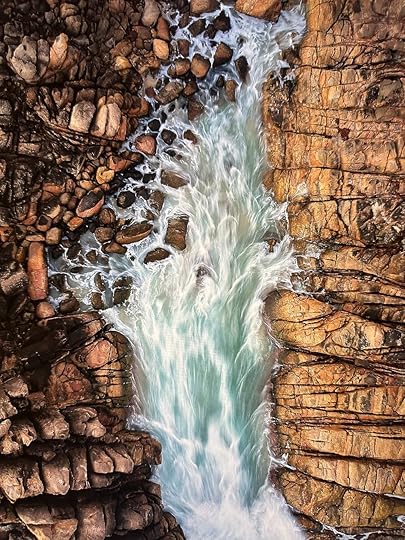
Photography by Christian Fletcher
Sculpt.
“Every block of stone has a statue inside it, and it is the sculptor’s job to release it” Michelangelo.
Every individual has one or more talents, and it is our job to find, feed and sculpt these talents.
Today we are increasingly in a world of builders, makers, creators, inventors and in sculpting something special out of raw materials is a way to find flow and make and leave one’s mark.
It may be writing or photography or video or writing code, cooking a meal, investing in a relationship, building a company or many other things but transforming and building is both an anti-dote and a homage to a transforming world.
We transform and are not just transformed.
Build things. Make stuff. Create something .Unleash potential.
We can release the statue within us or help others find the statue within them.

Photography by Christian Fletcher
Hone.“To hone my voice, I read everything, from books to cereal boxes, three times: once for fun, the second time to learn something new about the writing craft, and the third time was to improve that piece.” Amanda Gorman
In a world of change we must hone ourselves to align with change since change does not care to adjust to us.
Honing through iteration, upskilling, re-inventing, and many other ways of enhancing excellence of craft.
For many of us in the coming years it will be how to incorporate, build on, extend, and leverage AI as a tool, enabler, extender, and idea generator for our work.
How to find new ways to communicate and connect as Augmented Reality and Virtual Reality enable new canvasses.
Machines will replace people who do not hone their craft to incorporate machines but will not replace talent who hone skills to incorporate and complement machines.
We cannot control or impact what a world leader may do, what shocks may come or what others may have planned but we can twist ourselves and our skills into new shapes to make sure that we bend with the arc of the future and are not broken.
The future may not fit in the containers of the past.
But by architecting, sculpting and honing we will thrive in the container called the future.
March 19, 2023
Scale. Speed. Skill
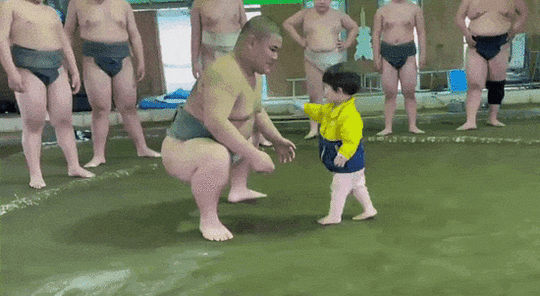
Successful companies are adept at combining the power of scale, the leverage of skill and the swiftness of speed to win.
Technology companies like Apple and Samsung aided by their partners at places like Foxconn and TMCC continuously improve, iterate, and ship.
Many food and packaged goods behemoths are filled with highly skilled people who innovate and produce at huge scale and have significant clout with distribution and advertising channels.
This week we saw Jamie Dimon of JP Morgan Chase leverage his experience from the 2008 crash and his knowledge of the system with the scale of his bank and other leading banks to attempt to stabilize First Republic bank. These were huge organizations whose CEO’s moved rapidly proving that elephants can dance fast and quick if they need to under skilled leadership.
The challenge for successful organizations moving forward is not they do not have scale, skill, or speed but rather what happens as a new world emerges where the benefits of scale diminish, when new skills become critical but the ability to hire the newly skilled with the old incentives are reduced, and the speed of the world outstrips the speed of the organization.

Scale
In the past three years in the US all the net new jobs have been created by companies with fewer than 250 employees.
Modern technology including GPT4, influencer and social media and the explosion of marketplaces from AWS to Shopify to Upwork to manufacturing and fabrication on demand by scaled foundries allow individuals and small companies to scale quickly with very limited resources.
These new platforms, technologies and marketplaces are significantly reducing the benefits of some types of scale and many types of expertise.
Today the scale of manufacturing, communication spending, resources and people are being augmented by a new scale of network, data, influence, and talent/ideas.
The Mr Beast’s, D’Amelio sisters and Kardashian sisters leverage the new eco-system to scale their talent without having to become big as companies.
A new form of media company built around world class talent whose bylines are featured as prominently as their publications logo combined with simple and low cost/no cost distribution such as email has made Axios, Puck and now Semafor influential and impactful with dozens versus hundreds or thousands of employees.
Scale! is a short piece on how scale is changing and what leaders and companies can do to scale their companies but themselves.
Not only can individuals now work at the scale of companies by upskilling, unleashing their talent, scaling through their teams, and building reputations as stellar as big firms but large companies now need to re-configure around talent rather than believing talent will cluster around companies.
The shift of power from big to small, management to talent, and from the towers of power to the talent with wrenches in the trenches has only just begun.

Skill
Every advance in technology places a premium on skilled ability.
Chat GPT, Runway ML, DALL·E 2, are modern paints and new canvases but in the hands of skilled painter (who has learned the new brush strokes necessary to unleash the potential of these tools) they can be far more magical than that of a lesser talent.
Ironically some of the skills in highest demand such as coding may become less scarce as the machine writes code, while the “softer” skills of creativity, curiosity, imagination, story telling and innovation which now will easily have all the facts, figures and charts at their disposal can connect dots in new ways by standing on the shoulders of machines to create new worlds and ways to wealth.
The demo of Microsoft’s Co-pilot which gives a glimpse of how AI will be weaved into the fabric of everything enabling individuals to have superpowers.
In today’s fast-moving environment, the half-life of skills decays much more quickly and unless one is continuously learning, enhancing capabilities, and upgrading talent a firm can suddenly find itself with herds of people skilled in yesterday’s tongue when the world is speaking a new language.
Today with 62% of Gen-Z having a side-hustle, free-lancers about to overtake full time workers and unbundled and distributed work offering a plethora of possibilities, large companies must re-invent themselves in every way to attract and retain talent.
Human resources, people development and talent leaders will become even more strategic to the fabric of the future company. Sadly, in the most recent round of layoffs many companies blew up their talent teams since they no longer were in “recruiting” mode.
Talent will matter more builds the case as to why talent will grow more and not less important in an AI and modern world of technology as we incorporate technology and re-design organizations around the best of people and machines.
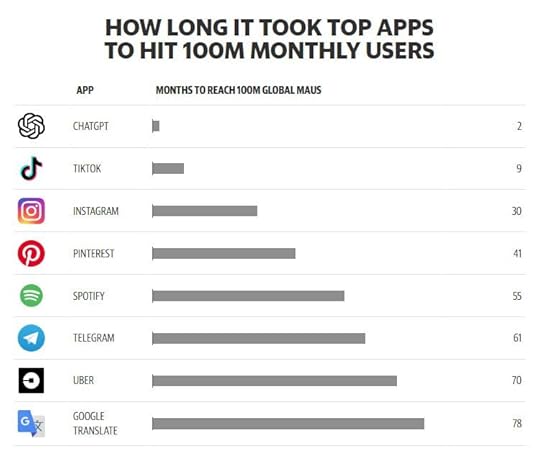
Speed
It took nearly two weeks for Washington Mutual to fail.
It took less than two days for SVB to fail.
It took Instagram 2.5 years to reach 100 million users.
It took Tik Tok 9 months to do the same.
It took ChatGPT 2 months.
Moore’s law saw processing power double every 18 months. In the world of machine learning and large language models the rate of doubling or even tripling is less than six months.
Fueled by software, social media, and a twitchy and connected world everything is accelerating at a speed which is leaving most organizations feel tortoise like.
In a world of espresso too many companies are going through the rituals and machinations of high tea.
We should all evaluate how much of our time do we spend working on output and how much time in meetings, check-ins, sign-offs, all-hands, temperature checks and other group gropes where we gather like herds around PowerPoint slides.
Quality control, risk management and inclusive viewpoints require a process that for good reasons slow down production or delivery while enhancing the eventual output and are essential.
But too many companies may still be following processes for another age with too many people and too many check-ins. A study by Bain indicated that any project moves forward in an organization less than 5 percent of the time and is waiting for the next sign off or is on hold the rest of the time.
When the benefits of scale are reduced the lack of speed now becomes a bug rather than a feature of a large company.
Feedback, Re-Thinking Presentations, and Fewer reveal how large companies can move faster by actually providing feedback versus check-ins, curtailing long dog and pony presentations that wind their way through time and limiting the number of people involved in a project.
Implications.
Every leader, every company and every individual must determine how best to hone skill, create new scale and determine where and what to speed up. Some approaches to consider:
New Strategies: Many moats like scale will soon become prison walls unless companies learn to break free from their containers and mindsets of the past. Think different. Do different.
Outside perspectives critical: Management and Boards need to look outside and below versus at people like themselves or upward. By the time stuff gets to Davos it’s too late and often the opposite of what is actually going on. The future does not only come from the heavens and a cabal of insiders but from the slime and outsiders.
Scale is not bad but needs to be leveraged differently: Being scaled does not mean one cannot move at speed and build new skill sets. Just look at Microsoft over the past five years. Or how the New York Times has re-invented itself for a new world.
Openness is the key: A mindset open to partnering which allows for speed and agility in incorporating new skill sets is important. An outlook open to other points of view when the future can come from anywhere and most importantly open to continuous learning in a world of change.
March 12, 2023
Focus and Flow

Photography by Rishad Tobaccowala
Bryan Wiener is one of the early digital pioneers who has created over half a billion dollars of shareholder value across the many companies he has either co-founded or helped grow and sell. He is best known for his leadership of 360i which he sold to Dentsu and his turnaround of Profitero which he sold to Publicis Groupe and which he continues to lead.
In the latest episode of the What Next? podcast titled “I am not Nostradamus” Bryan shares many learning and beliefs including:
a) how large companies can innovate by becoming fast followers.
b) how digital commerce will leak into everything and in doing so re-sculpt marketing and organizational design.
c) how future organizations will be built with product at the core and service at the edge.
During our conversation a theme emerged on how successful individuals and organizations combine focus and flow.

Photography by Rishad Tobaccowala
Focus One: Right time/Right market.Successful individuals and companies pick their spots and time to market.
Surprisingly the companies that succeed the most are not pioneers but fast followers.
They identify where consumer/customer behavior is outstripping current market supply or where existing business models are falling short and then they focus on improving upon the early pioneers.
Facebook, Google Maps, and the iPod were all fast followers to My Space, MapQuest, and Rio Player.
Moving too early requires years of investment in trying to find a product/market fit and moving too late means a crowded marketplace where margins are low, and differentiation is hard.
Large companies need to a) be ready to follow fast through acquisition and/or b) ensure they have focused teams that identify the small but about to become big marketplaces which the larger company may not be paying attention to.
Centralized innovation that does not utilize small teams focused on unaddressed markets, which are not sufficiently outward looking or too driven by the metrics of the big company is why too many companies burn through tens of millions without anything to show for the investment but power points and innovation offsites.

Photography by Rishad Tobaccowala
Focus Two: Outcome vs Activity and People versus Process.We often confuse activity with outcome.
So much time spent on the sounds and processes of the colon versus the cool shit that is created.
We often forget its talent and people that drive success versus structures and processes.
A few great players aligned as a team but otherwise unleashed will overwhelm armies of mediocre people chanting some corporate song written in yesterday’s script.
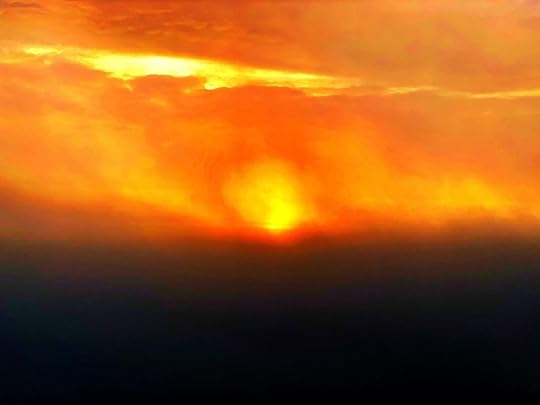
Photography by Rishad Tobaccowala
Flow One: Commerce is flowing into every corner.Twenty-seven years ago, Time-Warner launched the Full-Service Network in Orlando Florida which would combine television and on-line buying, broadcast, and commerce.
It went nowhere but did eventually lead to the disastrous AOL Time-Warner merger.
Today online companies like TikTok and Firework, Cooler Screens. emerging connected TV models and Walmart Connect, Amazon and Roundel are making this reality not just connecting video and commerce but re-thinking what next generation commerce can be.
It is greater than just e-commerce and is not on the side but encrusted everywhere.
We are moving into a world where a grocery store is a media company, a connected automobile is a huge part of commerce and Marriott is not just a hotel chain but a network to find, build relationships and sell to travelers.
Commerce has flowed into every corner of every enterprise and connection point.
Organizations must now learn to flow and be fluid and no longer fit into the old container of above the line, below the line and other containers of the past.
Digital transformation and modern marketing transformation is often about organizational transformation.
Eric Clapton sang “Let it Grow.”
Today it would be “Learn to Flow.”

Photography by Rishad Tobaccowala
Flow Two: Water over Rock aka Perseverance and Humility.Today for the first time in 15 years the tech and digital media industries are facing very difficult times. Many people under 35 have never seen such tough situations which unfortunately got much worse this weekend due to the failure of one of the keys of the tech industry for over forty years (Silicon Valley Bank).
This too will pass.
During our conversation Bryan with over 25 years of ups and downs speaks about the importance of persistence. The need to remain calm and harness emotions. The need for humility.
Right now, everyone is finger pointing and blaming each other: Silicon Valley Bank Collapse Sets off Blame Game in Tech Industry.
It is now that one must recognize that rock beating against rock just makes both rocks smaller.
“Water is fluid, soft, and yielding. But water will wear away rock, which is rigid and cannot yield. As a rule, whatever is fluid, soft, and yielding will overcome whatever is rigid and hard. This is another paradox: what is soft is strong” Lao Tzu
The game is long.
Technology is long too and from the advent of fire and the wheel is a key to the advancement of humanity.
It is time to help. Time to resurrect. Time to show up.
Time to persevere.
Technology will go on and in fact is now integrated into every company.
Every successful company will both be a product/tech company and a service/custom delivery company.
That is how things are built.
Flow on…
March 5, 2023
Fewer.

An underlying assumption many individuals, managers and businesses incorporate into our decisions and choices is the concept of maximizing.
While much of growth and well-being may be driven by more, a case could be made that less is what many should aim for if we are to solve problems, be happier and grow.
We are moving into an age of “fewer”.
Fewer things.
Fewer “managers”.
Fewer big companies.
Fewer people.
Which might give rise to greater rather the fewer opportunities.
1. Fewer things.In a piece on Sustainable Commerce Rex Woodbury points out the following:
a)Brands overproduce more than $500B of goods annually. In many categories less than half the inventory is sold.

Source: Hannah Murdoch & Rebecca Kaden of USV and Shopify data
b) Much of this unsold product ends up in landfills like the Great Pacific Garbage Patch, which covers 1.6 million square kilometers in the Pacific Ocean between Hawaii and California. The garbage patch is growing exponentially, swelling 10x each decade since 1945.

c) Most of the fast retail clothing is worn fewer than 6 times and is tossed filling landfills

What if one of the most powerful ways to address environmental challenges is to buy, consume and sell less?
 2. Fewer Managers.
2. Fewer Managers.Listen carefully to many employees as to why they prefer working from home or away from the office and in addition to flexibility, freedom, and work-life balance it is that they are more productive away from micro-managing, controlling, monitoring, continuously checking in management.
The past 3 years of working from home and or hybrid work has revealed that many managers are in crisis because they were not really managers but monitors, not leaders but bosses, not problem solvers but project assigners, and the talent who they oversee have begun to wonder what actual value their managers create besides “managing”.
Managers are an important role but as wonderful survey of research by NPR “Why your bad boss will probably lose the remote-work wars” reveals much of the blather about the importance of returning to the office is because management has failed to re-invent itself and recognize that there is much less need for their hovering. That in person interaction is key for training, creativity and relationship building but a forced march to x days in an office may not be the way to achieve this.
Fewer great in person interactions versus doing work one can do at home from the office.
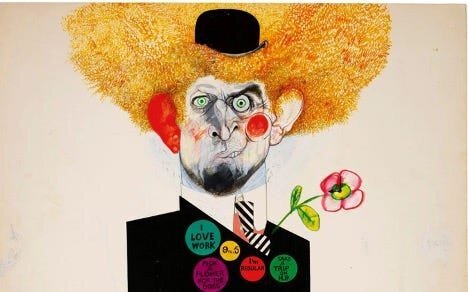
We have entered an age of “De-bossification”
In many industries particularly “White-collar” ones the era of “bosses” is in decline.
There is a rise in the need for leaders, guides, coaches, mentors, role-models, creators, and builders.
Less of a clamoring for bosses, managers, controllers, monitors, evaluators, and paper pushers.
This shift has been driven by changing demographics, the spread of technology, the rise of unbundled and distributed work, new behavior expectations, and a re-definition of what “work” is including the rise of fractionalized and free-agent talent who work for themselves or at multiple jobs and are expected to comprise most of the work force in the US by the end of the decade.
More and more companies like Meta are interrogating why they have so many levels of managers and do these managers create enough value and to offset their cost and the extra slowness multiple layers can create.
2023 will be the year of “The Great Flattening” as multiple layers of hierarchy are interrogated.
People think the threat of a recession will give the balance of power to managers over employees when the exact opposite is likely to be true where employees have many more options because of a new world of marketplaces and technologies and three years of recognizing that individuals succeeded without too much management will have Board look at the layers of bosses and cut real estate costs.
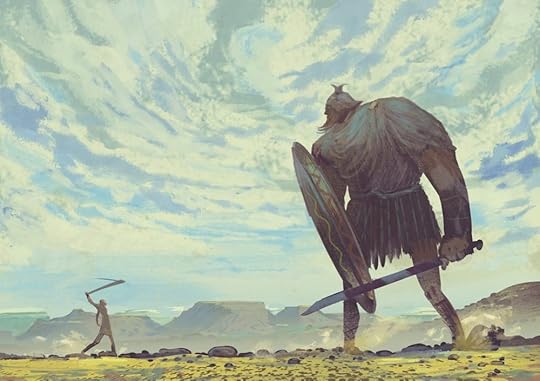 3. Fewer Big Companies.
3. Fewer Big Companies.A recent Wall Street Journal article, relying on labor data and an analysis from Jeffries, an investment banking and capital markets firm, determined that small companies were responsible for all of the net job growth since the start of the pandemic and accounted for four out of five job openings. According to the government’s Job Openings and Labor Turnover Survey, companies with fewer than 250 employees hired 3.67 million more people than have been laid off or who quit since February 2020. Larger companies, on the other hand, have cut a net 800,000 jobs during this time.
Increasingly scale is a disadvantage because modern technology, cloud computing, and marketplaces from Upwork to Shopify allow small firms and individuals to tap into scaled resources just in time while being agile and keeping costs flexible.
Technology is the slingshot that allows David to take on Goliath.
In addition to enabling technology there is a new mindset favoring small:
Over a third of Gen-Z have side-hustles and side-gigs as being a maker, owner, creator, influencer is far more compelling than being just a managed employee.
 4. Fewer People
4. Fewer PeopleIt takes 2.1 children per woman to keep the population flat.
That number in most advanced countries is less than 1.7 and declining.
The latest UN projections suggest that the world’s population could grow from 8 billion people to a peak of 10.4 billion before the end of this century. But if we exclude population growth in Africa the population of the world has peaked and, in a few countries, we are starting the great shrinkage.
The Shanghai Academy of Social Sciences team predicts an annual average decline of 1.1% beginning in 2021 pushing China’s population down to 587 million in 2100, less than half of what it is today.

Every business should interrogate their strategy to ask two questions a) how will our plans be impacted in our key markets with declining populations and b) what is our plan for the continent of Africa which will contain more 40 percent of the global population in 2100?
So, as we navigate the future, we may want to start planning on how to grow in a world of fewer, smaller and less than a world of unlimited, bigger and more.
February 26, 2023
Sports=Future
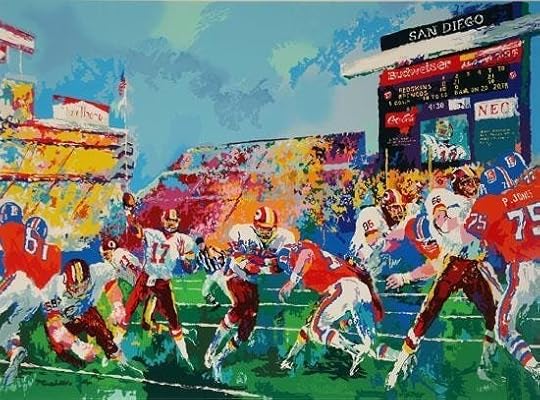
Artwork by LeRoy Neiman
A few months ago, I was connected to Dr. Sascha L Schmidt the Director of the Center for Sports and Management at WHU – Otto Beisheim School of Management which is a leading German business school in Dusseldorf.
Dr Schmidt began his career at McKinsey and worked on a start-up before combining his hobby and passion for sports with his job. Today he is one of the pioneering thinkers and researchers at the confluence of sports and technology. He also lectures at MIT and is an affiliate professor at Harvard and is the editor of 21st Century Sports: How Technologies Will Change Sports in the Digital Age
Over the past few weeks, we have worked together on two projects. Dr Schmidt asked me to contribute a new chapter to the updated edition of 21st Century Sports which is titled Sports in the Third Connected Age and we spoke at length about where business, sports, technology, and the future intersect for the What Next? Podcast I host. ( Listen to it here or see more below)
Over these weeks it dawned on me that one way to both understand the future, to get people excited about the future ad to re-imagine the future is to follow the future of sports which is far more approachable to most people than the future of technology.
So here are five ways that sports are shapeshifting which is directly applicable to every individual and business.
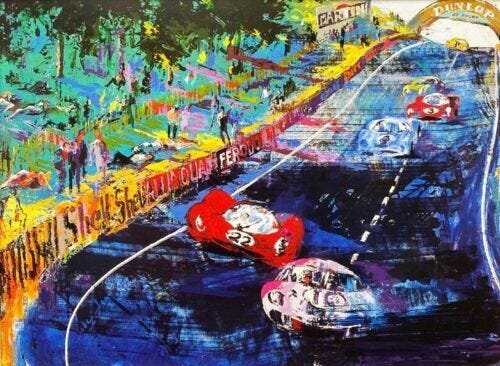
Artwork by LeRoy Neiman
1. The Great Mongrelization.Sports and entertainment were always integrated and today it is live sports that dominates entertainment and in many ways is the heartbeat keeping linear television alive.
But sports does not just drive television now television resurrects and gives new life to sports as seen in the massively popular Drive to Survive series from Netflix.
Nielsen found that 34% of Netflix viewers became fans of F1 racing after watching the series. Another 30% said they understood the sport more, and 29% said they felt more engaged with the sport.
Sports and television have been long intertwined and 25 years ago Michael Jordan in Chicago fused fashion with sports by dressing in bespoke suits as he arrived and left the locker room.
Since then fashion has weaved its way into every aspect of sports as illustrated in the fact that the World Cup trophy handed to Lionel Messi was delivered in an LVMH case.
If fashion is a form of identity so is our sports allegiances and except for Harley Davidson most fans tattoo their teams and not brand logos on themselves.
And sports and fashion and social media make for a quantum force of congruence and re-enforcement.
The CEO of Endeavor, Mark Shapiro recently noted the intersection between sports, fashion, and new media “In the era of social media, when Instagram moves product and the camera is always on, the legend gets made on the field. But every other waking moment is an image-making performance about what you are wearing, the products you use and how that gets shared.”
To understand the future of media, business, fashion and much more follow the future of sports! This way it is easier to explain to Board Rooms who may be less passionate about technology than sports to open their eyes to the future and open their pocketbooks to fund the future. And Sports also helps one to understand why the threats and opportunities to a business come from adjacent areas which intersect and combine like fashion and sports.

Artwork by LeRoy Neiman
2. Only the Schizophrenic Will Survive.Most businesses struggle with ensuring that they make their numbers today, keep true to their brands, and focus on their roots while also enabling their future, re-imagining brands and finding new wings. It is never either/or but both/and.
It is the schizophrenia of balancing today and tomorrow versus being paranoid about the future or remaining rooted in some psychological fixation on the past which creates long term success.
Sports has grown, surged, adapted, and morphed but has worked hard to remain conservative, true to history, respectful of legacy.
Rules and governing bodies are strict but adaptable as new technologies from lighter equipment, stronger materials and other innovations change the contour of sports including a world where fans expect more, faster, and quicker.
If one looks at the highest levels of Cricket which began as five-day affairs with white clothed players and breaks for tea and lunch one sees these “Test” matches between countries continue but now limited over cricket has taken the world by storm and IPL cricket in India has become the fastest growing sport.
To understand how to take our company, brand, and ourselves into the future by balancing today and tomorrow, risk and reward, roots and wings we can learn from how different sports are adapting to the future. Translating their moves to our industry allows for examples but also much easier translation and buy-in.

Artwork by LeRoy Neiman
3. The Future is Global.Sports is the canary in the coalmine that reminds us that globalization is here to stay.
Sports, entertainment, and food are three human desires and needs common everywhere and these three have been turbocharged with advances in communication and other technology.
Advances in travel have globalized food, advances in communication and technology have globalized entertainment (the biggest shows in the US on Netflix are often from countries outside the US and many of the hits on Spotify today are from Latin America).
Communications and Technology has truly turbocharged sports bringing Cricket and F-1 sports to the US and taking NBA and NFL basketball to Europe and other areas.
As importantly 6.5 billion mobile phones and the Internet have created a constantly connected and engaged global fan base. With some small exceptions sports is the one content type that is not censored or edited around the world.
Any business or talent that questions globalization ( a multi-polar globalization with many centers of power versus just the West) just needs to look at the success of sports and the focus that each sport is trying to globalize itself.
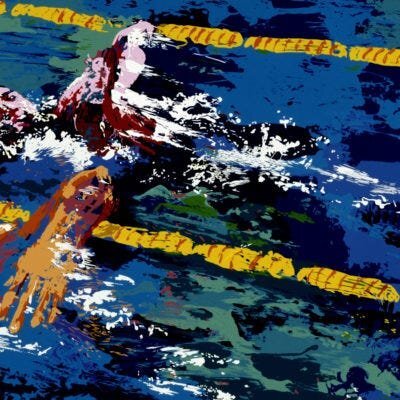
Artwork by LeRoy Neiman
4. The Triangle Rules!There is no silver bullet in business because every business has three core constituencies that must be listened to and served.
The customer/consumer is one, management/shareholders are the second and employees/suppliers are the third.
No business can endure without finding a way to balance these needs as they move into the future.
Skewing too heavily in only one direction leads either to bankrupt companies, destroyed brands or an inability to attract and retain the talent.
Sports franchises continuously work out a way to balance the fan, the player and owners needs with a plethora of different rules, salary caps and much more.
To understand how to balance, weigh and adapt to changing needs and circumstances of the three key constituencies as one’s industry changes look no further than different sports leagues to learn from their successes and failures.

Artwork by LeRoy Neiman
5. Reset. Resurrect. Reimagine.Every sports player works to reset continuously through feedback and iterative improvement.
Many of those real time and constant feedback loops are now becoming available outside of sports due to large amounts of real time data and our instrumented selves and dashboards. Using this information, we all need to learn the value of resetting each time we start a project from the learnings of what worked and what did not from the past.
As AI and other technology spreads, we can learn from Sports Leagues which have pioneered many of these technologies and data from the Oakland A’s of Moneyball fame to how to chess players integrate computers into their training.
Athletes lose much more than they win land need to resurrect themselves from defeat.
Similarly, today many companies find themselves threatened with potential defeat by new entrants, new technologies and the new needs of the people they serve. The ability to re-invigorate, refresh and reboot is a key to success in these fast-changing times.
Finally, technology is forcing Sports to re-imagine not just each sport but what sport is.
E-Sports of today will morph into new types of sports in an AR/VR world.
Ownership of sports and creation of leagues may change with Blockchain and DAO’s.
We will soon have virtual players playing virtual games in virtual worlds which we will all watch virtually.
Sports has shown that anything is possible if one is willing to balance today and tomorrow, address needs of different constituencies, be open to incorporate and blend parts of other industries, never lose the focus on globalization, and continuously measure to reset, resolve to resurrect when down and re-imagine what can be!
The future is sports.
February 19, 2023
Great Interactions!

Photography by Paul Wakefield
At times when we meet with people individually or participate in a meeting, we leave believing that we enjoyed a great interaction.
Over time it has become clear that to ensure great interactions individually or with teams we should focus on leaving them with three things:
Clarity. Belief. Energy.
Thanks for reading The Future Does Not Fit In The Containers Of The Past! Subscribe for free to receive new posts.

Photography by Paul Wakefield
Clarity.
The Cambridge dictionary defines clarity as the quality of being clear and easy to understand.
In a great interaction or meeting people come out with a clearer understanding of a situation, with greater precision of knowledge, and clear-cut next steps than before the meeting or interaction.
Doubts are cleared. Any mixed signals clarified. Hedges eliminated.
Everybody is clear as to what they need to do next and who is doing what.
One leaves the interaction better informed and equipped to tackle whatever the challenge or problem might be.
Now think of the meetings one has when people come out more confused, more unsure of what to do. We have all attended these group gropes or even individual one on one meetings which were thick with dense mumbo-jumbo, buzz-word bingo, oozy obfuscation and mixed signals that left us more mystified and doubtful than before we had the interaction.
One way of ensuring clarity is to speak simply using plain language and have people play back what the next steps are.

Photography by Paul Wakefield
Belief.
It is one thing to be clear as to what must be done next but as important is to leave an interaction with a greater belief in your or your team’s ability to do what is necessary.
Many managers collapse the mood of a room by berating an individual or team’s performance without some offsetting knowledge or guidance on how they can do things better or improve themselves.
A great interaction occurs when one leaves a meeting feeling more confident about one’s capabilities in tackling what must be done. Even if one had received feedback in a meeting about not having done a good job it is key to leave with guidance and a sense of motivation that one can fix the situation and finding a remedy.
A dirge like procession of individuals with hang-dog faces, droopy shoulders and shuffling feet is not just a downer but a negative vibe that echoes through everybody who interacts with the individuals whose self-belief was drained out of them.
A key is to leave someone feeling better about themselves after you meet them rather than worse even if you provide them with less than positive information by showing how you or another individual tackled the same problem, reminding them of the times they recovered when they were knocked back by a challenge or sharing your individual stories of tackling similar situations.

Photography by Paul Wakefield
Energy.
We are living in a time of great change, accelerating velocity of business and multiple pressures.
This is leaving people often drained, burned out and wanting to just curl up under a blanket from the noise and tension.
Great interactions leave people rejuvenated, replenished, and refreshed.
While clarity is about the mind, belief about the heart, energy is about the body.
Bringing energy to a meeting can boost others. Energy is contagious. Other ways to leave people more energized can involve leveraging humor, providing the opportunity to take a break, or bringing empathy and understanding on the forces that drain energy with some ideas of fixing them that can leave people with a boost.
Regardless of whether one interacts in person or remotely, individually or in groups, how senior or junior one is the likelihood of having a great meeting or interaction is likely to improve if one focusses on leaving everybody you interact with clarity, belief, and energy.
February 12, 2023
A Gift.

Two and half years ago on Sunday, August 16, 2020 I began the first edition of this thought letter as follows:
The idea behind this newsletter is that of a gift.
Like a gift it is free (no subscription fee, no up-charges to access special content, no advertising, no affiliate links, your email will not be shared or sold, and no algorithm is running in the background mining your behavior)
Like a gift I hope it will be of some value in helping you see, feel and think differently about how to grow yourself, your team and/or your company in the future.
Like a gift, I hope it will generate goodwill for the giver. Your attention and time which is so valuable. Good karma. Stronger relationships.
Since then I have written every Sunday for 131 weeks on a different subject.
Have been fortunate that tens of thousands of people subscribe or read my writing every Sunday (it is also reprinted and distributed by other publications all over the world) and increasingly there has been a request to find ways to access past writing when someone wants to share or use it for some reason. Almost all my pieces are evergreen since they are not aligned with the news or politics so you can read a piece from two years ago and it is likely to be relevant to the times and your needs.
So, I have curated the best 6 pieces of writing in the 12 areas that I write about on a single page that can be bookmarked, shared, and accessed by anyone anywhere on any device without charge or even entering an email.
This page will constantly be updated always containing the six best pieces in each area. A better piece will replace a current piece. So, it will not only be current but continue to be a distillation of the best.
Here is the page: https://rishadtobaccowala.com/100 and below is a look on what is available in each of the 12 areas and how best to leverage it.
 The Future.
The Future.We all should be concerned about the future since we are going to spend the rest of our lives there. This section contains a broad thesis on the future (The Future), the four shifts remaking the future (The Four Shifts) as well as ten specific forecasts for the next 10 years (Ten Forecasts for the Next Decade) and why every company needs to re-think its strategy (Re-Thinking Strategy) and how future organizations will be elastic in nature (The Future is Elastic)
 Managing Change and Upgrading Ourselves.
Managing Change and Upgrading Ourselves.The future does not adapt to us but we must adapt to the future.
This means we must change. But change sucks. However since irrelevance is worse, we must change. How do we manage change especially our own? (How do we slay our own inner dinosaur?) And what are the essential elements of making a company transform (Six Keys to Change)
One of the ways to transform and change is to upgrade our own mental operating systems. (Learning to Learn), ensuring that we do not get so high on our own fumes that we fail to adapt and defeat ourselves (Self-Defeat),
 Enhancing Effectiveness and Becoming a Leader.
Enhancing Effectiveness and Becoming a Leader.In an accelerated world of unbundled and distributed work and next generation technologies such as AI we will see a decline in the power of “bosses” (De-bossification) and a need to work not just in tandem with but add value to the increasing capability of machines. (The Four P’s). How does one lead and be effective in such an era? (Management Next?) How do we re-imagine meetings and how do we give feedback in a world of DEI, ESG, Remote Work and concerns about our own relevance? (On Feedback) We will work with machines but influencing, inspiring, and building people will still be critical (Tattoo Moments, On Leadership)
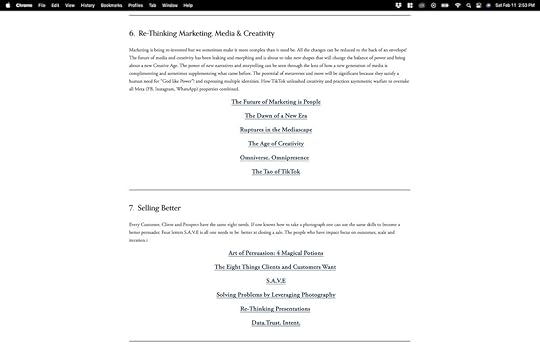 Re-thinking Marketing and Selling Better.Marketing is being re-invented but frankly people have made it needlessly confusing.
The Dawn of a New Era
attempts to explain the future of marketing with one single chart!
The Future of Marketing is People
makes the case we should not think about consumers, customers, and members but people, that we should market through people versus to people and that marketing people need to upgrade their skills and their roles in the company.
The Age of Creativity
reminds us that in a world of plumbing it will be poetry that will differentiate.
Re-thinking Marketing and Selling Better.Marketing is being re-invented but frankly people have made it needlessly confusing.
The Dawn of a New Era
attempts to explain the future of marketing with one single chart!
The Future of Marketing is People
makes the case we should not think about consumers, customers, and members but people, that we should market through people versus to people and that marketing people need to upgrade their skills and their roles in the company.
The Age of Creativity
reminds us that in a world of plumbing it will be poetry that will differentiate.We are all in sales in one way or the other. The Art of Persuasion:4 Magical Potions distills the best learning on this topic from Eight Things Clients Want, how to Solve Problems Using Photography, why S.A.V.E is a key filter for sales and why if you need to have a deck of more than 9 slides you truly have nothing to say. Re-Thinking Presentations remains the most popular post I have written.
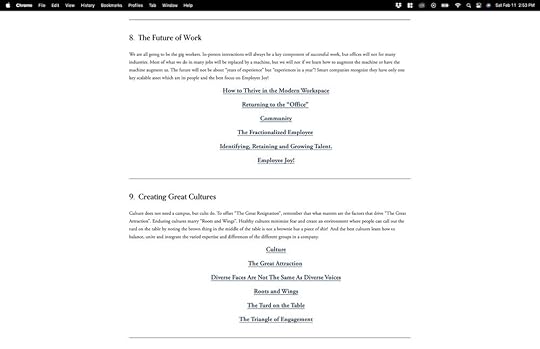 The Future of Work and Creating Great Cultures.
The Future of Work and Creating Great Cultures.My next book (in progress) to be published globally by McGraw-Hill in Fall of 2024 is tentatively titled Re-Thinking Work. The challenges of distributed work post Covid that companies are struggling with is but a side show to what is coming in a world of four generations at work, next generation technology, new marketplaces, and a wave of multi-polar globalization among many things (How to Thrive in the Modern Workspace). Work in 2029 will look nothing like 2019 in how it will be done, who will do it, where it will be done but why we work and the importance of culture (Culture), the need for employee engagement (The Triangle of Engagement), the critical role of talent ( Identifying, Retaining and Growing Talent) and what will attract people will stay the same (The Great Attraction).
 Managing Careers.
Managing Careers.Make no mistake every single person at every level of every firm is re-thinking their career. My career writing except for a post on how to write presentations (Re-Thinking Presentations) are the most read and shared. Thousands of executives have leveraged these learnings. Read Career Tools for an overview, 12 Career Lessons and Looking Back, Looking Ahead for everything I have learned in a forty year career on how to manage a long and winding journey that we will all have, and Career Turbocharging is an exercise that will change the way you frame and filter yourself and your opportunities forever.
 Personal Growth/Wisdom.
Personal Growth/Wisdom.My older readers find these pieces particularly relevant, and this is the section most shared by many leaders with their teenage or young adult children.
The only thing we have is time (Time Passages). And so much of life is a combination of Story. Place and Loss.
While we are growing our companies and our bank accounts and our reputations let us not forget to grow ourselves (Sacred Hours), that we got here because of mentors and guides and other elders (Go the Extra Mile it is Never Crowded) and let us not forget that in the end it is about Architecting Joy, Generosity, and Dignity.
Hope you will find this page (https://rishadtobaccowala.com/100 ) helpful in your work and life. Feel free to use all of it. Nothing is copyrighted. Nothing needs to be attributed. There is no cost and there will never be a cost.
A Gift to you for the gift of your time in taking time to read my writing.
Thank you…
February 5, 2023
The Future of Marketing is People.

Painting by Edward Hopper
The future of marketing is people.
A) It is about understanding people as people and not just as consumers, customers, members, and users.
B) It is about getting people to advocate for a brand to other people.
C) It is about upgrading the status of marketing people and upgrading marketing people.

Painting by Edward Hopper
Marketing is about understanding people.For too long marketers have fixated on consumers, customers, members, and users.
While these are important what is critical is seeking to understand people as people.
When one looks at a person as a consumer one is liable to miss a lot for the following reasons.
1) Narrow Lens: When one looks at a person as a consumer it is looking to understand the person through brand usage which is by very definition one of hundreds of brands filling met and unmet needs of a person. People do not define themselves by brands and rarely want to have relationships with brands. Some marketers define themselves by brands and have the delusion that people want to have a relationship with Tylenol versus just wanting their headache to go away.
2) Failure to see competitive threats: Viewing people as consumers or users means evaluating and benchmarking one’s brands with their use of other brands in one’s category. However, the greatest threat and opportunity tends to come from outside one’s category today due to technological disruption and changing behavior. Newspapers were disrupted by Google. Magazines by Instagram and today Television by Netflix and TikTok for example. Focusing on consumers and users meant that none of the incumbents were monitoring these other players. A focus on one’s category may lead a brand to be less pathetic than others in their category but not great or relevant for the future.
3) Failure to understand needs: One of the reasons categories get disrupted from outside is because by seeking to understand a person through category dynamics one may miss understanding what they are truly seeking. Dollar Shave Club and Harry users were not just looking for the best shave but a decent shave at a great price and convenient purchase. Multiple blades, vibrating blades, heated blades were no longer the key.

Painting by Edward Hopper
Marketing is getting people to advocate for you to other people.The most powerful form of marketing has always been word of mouth.
Word of mouth has become exponentially more powerful due to social media and new tools and technologies.
Tik Tok provides editing and other tools to let anyone create and mix videos. Substack enables reaching tens of thousands to millions of people. It is easy to create and distribute podcasts.
Social media channels enable distribution.
Influencers and creators become key to a brand.
Instead of marketing to people we should consider marketing through people by arming them with assets, information, tools, and incentives.
Also, every marketing company should fixate on their employees and suppliers.
Make employees advocates by treating them well and aligning them with the marketing program.
Inform, trust, and pay suppliers well. They can be a source of ideas, marketing, and competitive intelligence.
Emerging AI tools such as ChatGPT will further empower the individual and the underlying trends of Web3 will now give them not just a voice but ownership.
Every company’s marketing and media programs should be grounded in marketing through people with significant investment and emphasis on generating and building advocacy among one’s external and internal audiences and partners.
One should fixate as much if not more on people than fixating on first party data, AI and the Metaverse.

Painting by Edward Hopper
Marketing is about upgrading the status and skills of marketing people.Forty years ago, in my first marketing class at the University of Chicago we read Philip Kotler (a renowned marketing guru operating a few miles away at Northwestern University) who defined marketing as “understanding and meeting people’s requirements”
For the next four decades I got to work with some of the best marketing companies in the world and looking back two things stood out which taken together raises concerns:
1) Marketing has become more critical: People became more empowered as technology enabled them to have “God Like” power particularly in the past two decades since the scaling of Search, Social, E-Commerce and Mobile. These new technologies also have merged offline/online, above the line/below the line and fused marketing and experience into one. Therefore, understanding and meeting the requirements of people/gods became more important. So marketing was growing more and more critical.
2) Marketers power has diminished in most companies: The first two decades of my career it was not just Agencies that got to present to the Board room, but marketers did. Today look at the Board of Directors of companies including marketing firms, and few have CMO’s on the Board. There is the voice of money in the CFO, the voice of technology in the CTO/CIO, the voice of talent in the Chief Human Resources/Talent officer but where is the voice of the people/customer/consumer just when they are growing more and more powerful?
Companies will find it very difficult to succeed in a world of empowered people unless they have empowered marketers, marketing fuses into every part of the company and every individual upgrades their skills. Marketers need to be in the room where decisions are made rather than implementing or informing decisions.
But the wheel may be turning…
Recently there are signs that marketing is getting a voice by transforming the CMO role to one of a Chief Growth Officer, Chief Experience Officer, or Chief Transformation Officer or combining a CMO role with a Chief Data Officer role and no longer separating CMO from Chief Digital Officer.
Companies are beginning to look for “full-stack” marketers who can drive performance leveraging data and technology and platforms in the short run while building brand and reputation with storytelling, design, cultural relevance and more.
Marketing people need to have a greater voice and to have a greater voice marketing people need to upgrade our skills and capabilities for a world where marketing is not a side car attached to a motorcycle with some carnival barkers but the engine that makes the motorcycle and its engine throb.
The future of marketing is people.



